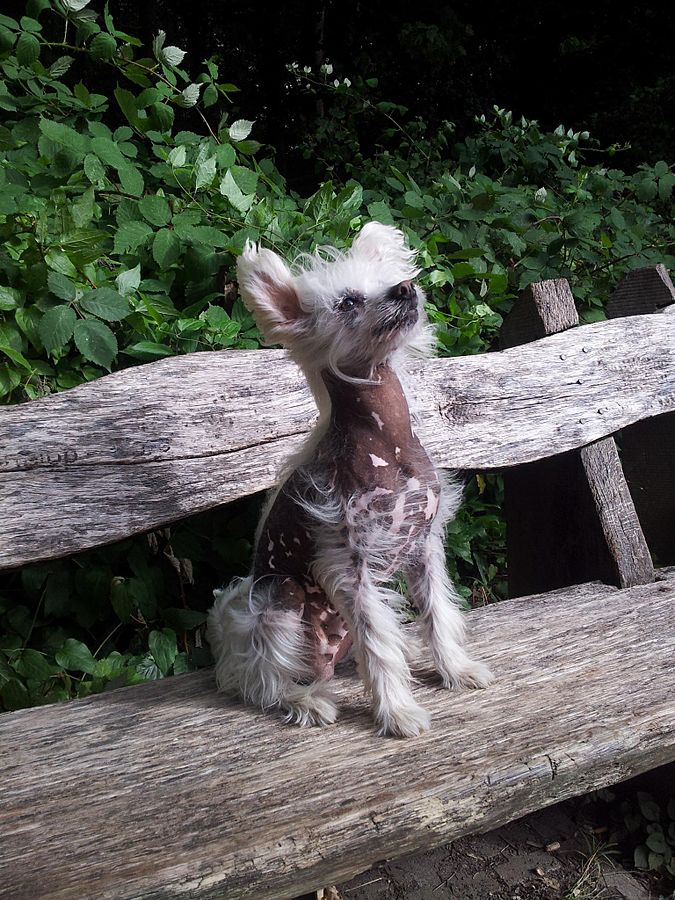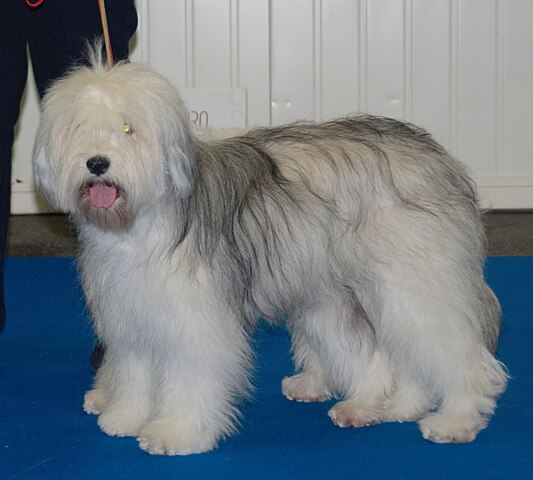The Chinese Crested comes in two rather distinctive varieties – the hairless (naked except for a mane around the head, as well as on the legs and tail) and the powderpuff (long silky hair all over the body). Bred since ancient times for companionship, this delicate little breed exhibits grace and elegance in their movement. That said, this is a loving and playful breed that enjoys entertaining his family with his oftentime-silly antics. Cresteds are affectionate and love being around their people – many of them becoming little shadows to their owners. Some can tip into being needy and prone to separation anxiety.
It is a good idea to have an escape-proof fence with this breed, as Cresteds are known for being little escape artists! They can jump surprisingly high for their height, and are apt climbers and diggers. If the owner is out in the yard with them, there is usually no reason to worry. These guys prefer to stay near their owners. But if they are left alone in the yard… especially if they can see the owner through the fence… they may try to escape. A secure fence will solve this problem.
The breed has been described as “cat-like” in many ways. For example, they enjoy high places and can often be found perching on the back of a couch or a table – keeping an alert eye on “their kingdom”. They use their feet to grab objects and pull them closer. Clean and quiet like a cat, they make great companions for apartment-dwellers. Although this tiny breed has a medium-high energy level, they have no problem calming down when the family is in “relaxed mode”. While they enjoys walks, they don’t require a ton of exercise (although they should be given a coat if being walked on a cold day)
Although not always seen in obedience competitions, Cresteds learns quickly and can be trained to do many things. Intelligent and enthusiastic, they enjoy pleasing their owners and learning new commands. This said, they may take longer to housebreak and some have a big stubborn streak. Because of their sensitive nature, they don’t do well with harsh training and learn better with fair, positive-based methods. 
Being sensitive, the Chinese Crested will not put up with rough handling of any sort. Therefore, families with young kids generally don’t make a great match. The same thing can be said for other dogs – Cresteds usually get along very well with even-tempered dogs but can become overwhelmed with rude, pushy ones. Following this trend, these little toys love strangers… as long as they’re polite. It is highly recommended to socialize a Crested while still a puppy to avoid excessive shyness. Under-socialized members of the breed are extra cautious of everyone and everything.
The skin of the hairless Crested needs regular care and protection from the sun. They can – and do – get sunburned! Dogs who have lighter skin, or have not yet built up a tan, are more likely to burn. For this reason, sunscreen and/or protective clothing is necessary if they are going to be outside in the sun for a long period of time. Giving them access to shade is another precaution that can be taken. If the dog does burn, a bit of aloe lotion can help soothe the skin. Just like humans, hairless are also prone to acne! Acne can be prevented by bathing the dog once a week with a quality shampoo and conditioner. If needed, many acne products made for humans can be used for dogs as well – but consult a vet first.
On the opposite side of the spectrum, the coat of the Powderpuff must be brushed regularly to avoid mats and tangles. Although the hair furnishings should be brushed on the hairless variety as well, obviously it is much less work! Both varieties need to have regular teeth brushings and inspections since dental disease is more common in Cresteds (and toy dogs in general). Ears should be cleaned every other week or so, and nails must be clipped regularly. Powderpuffs often have their faces and ears shaved for a cleaner appearance. The breed sheds very little and is hypoallergenic (for some people).
Cresteds are a long-lived breed, often living 13-18 years. They are generally healthy although it is recommended to buy a dog from a responsible breeder who health-checks their breeding stock. Make sure the breeder checks for PRA and PLL (eye disorders) and patellar luxation (slipping kneecaps). The breed is sensitive to anesthesia and some medications, so find a vet that is familiar with treating these sensitive dogs. It is also recommended to space apart vaccinations from each other and not give every vaccine to the dog on the same day. This is good practice for any dog – purebred or mixed breed – but smaller breeds are extra susceptible to over-vaccination issues.



